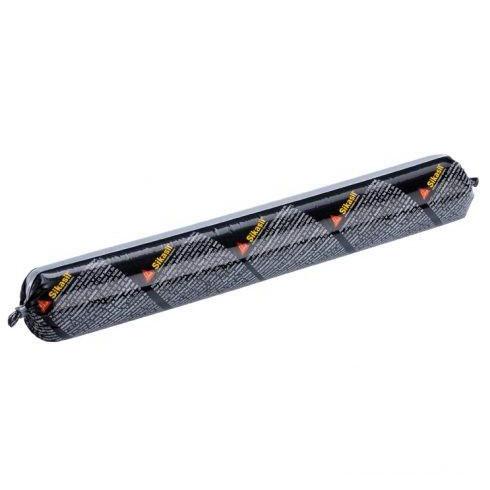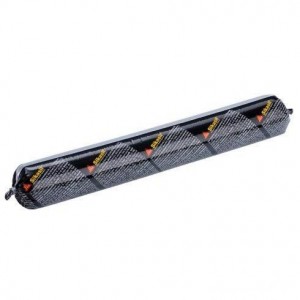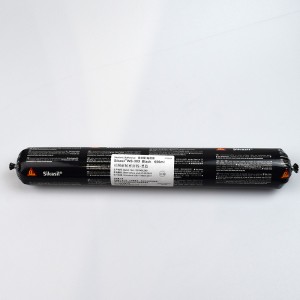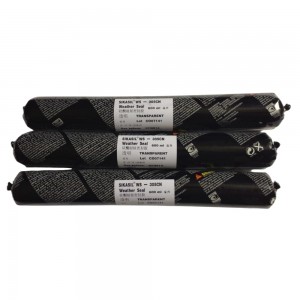Sikasil® WS-300 S High performance silicone weatherproofing sealant
Features &Benefits
- 1. Easy to apply
- 2. Very good UV and weathering resistance
- 3. Adheres well to many substrates including glass, metals, coated and painted metals, plastics and wood
- 4. Conformity with LEED v4 EQc 2: Low-Emitting Materials
Typical Product Data
| Chemical base | 1-component silicone | |
| Color (CQP001-1) | Transparent
|
|
| Cure mechanism | Moisture-curing | |
| Cure type | Neutral | |
| Density (uncured) | 1.02 kg/l
|
|
| Non-sag properties (CQP061-4 / ISO 7390) | Good | |
| Application temperature | ambient
|
5 ─ 40 °C
|
| Skin time (CQP019-1) | 5 minutes A | |
| Tack free time (CQP019-3) | 25 minutes A | |
| Curing speed (CQP049-1) | see diagram
|
|
| Shore A hardness (CQP023-1 / ISO 48-4) | 30 B | |
| Tensile strength (CQP036-1 / ISO 527) | 1.0 MPa | |
| 100 % modulus (CQP036-1 / ISO 527) | 0.3 MPa | |
| Elongation at break (CQP036-1 / ISO 527) | 650 %
|
|
| Tear propagation resistance (CQP045-1 / ISO 34) | 9 N/mm | |
| Service temperature | -40 ─ 150 °C
|
|
| Shelf life | cartridgeunipack
|
9 months C15 months C
|
| CQP = Corporate Quality Procedure | A) 23 °C / 50 % r.h. | B) after 28 days | C) storage below 25 °C |
Technical Information
CURE MECHANISM
Sikasil® WS-300 S cures by reaction with atmospheric moisture. At low temperatures the water content of the air is generally lower and the curing reaction proceeds somewhat slower (see diagram 1).
The curing speed of the reaction depends mainly on the relative humidity and temperature. Material temperature above 50 °C could lead to bubble formation and has to be avoided.
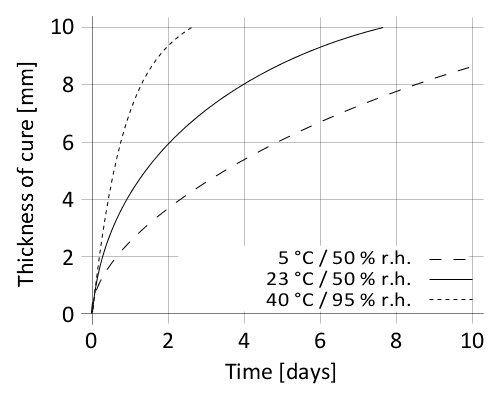
Diagram 1: Curing speed Sikasil® WS-300 S
Applications
Surface preparation
Surfaces must be clean, dry and free from grease, oil and dust. Surface treatment depends on the specific nature of the substrates and is crucial for a long lasting bond.
Application
The optimum temperature for substrate and sealant is between 15 °C and 25 °C.
Sikasil® WS-300 S can be processed with manual, pneumatic or electric driven piston guns.
Joints must be properly dimensioned.
For optimum performance the joint width needs to be designed according to the move-ment capability of the sealant based on the actual expected movement. The minimum joint depth is 6 mm and a width / depth ratio of minimum 2 : 1 and maximum 4 : 1 must be respected. Joints deeper than 15 mm must be avoided.
For backfilling it is recommended to use closed cell, sealant compatible foam backer rods e.g. high resilience polyethylene foam rod. If joints are too shallow for backing material to be employed, we recommend using a polyethylene tape. This acts as a release film (bond breaker), allowing the joint to move and the silicone to stretch freely.
Tooling and finishing
Tooling and finishing must be carried out within the skin time of the sealant.
When tooling freshly applied Sikasil® WS-300 S, press the adhesive to the joint flanks to get a good wetting of the bonding surface. No tooling agents to be used.
Removal
Uncured Sikasil® WS-300 S can be removed from tools and equipment with Sika® Remover-208 or another suitable solvent. Once cured, the material can only be removed mechanically.
Hands and exposed skin have to be washed immediately using hand wipes such as Sika® Cleaner-350H cleaning towels or a suitable industrial hand cleaner and water.
Do not use solvents on skin.
Overpainting
Sikasil® WS-300 S cannot be overpainted.
Application limits
For specific information regarding compatibility between various Sikasil® products contact the Technical Department of Sika Industry.
To exclude materials influencing Sikasil® WS-300 S, all materials such as gaskets, tapes, setting blocks, sealants, etc., in direct and indirect contact have to be approved by Sika in advance.
Where two or more different reactive sealants are used, allow the first to cure completely before applying the next one. Sikasil® WS-300 S may only be used in combination with structural glazing applications after a detailed examination of the corresponding project details.
Do not use Sikasil® WS-300 S on PMMA and PC elements as it may cause environmental stress cracking (crazing).

